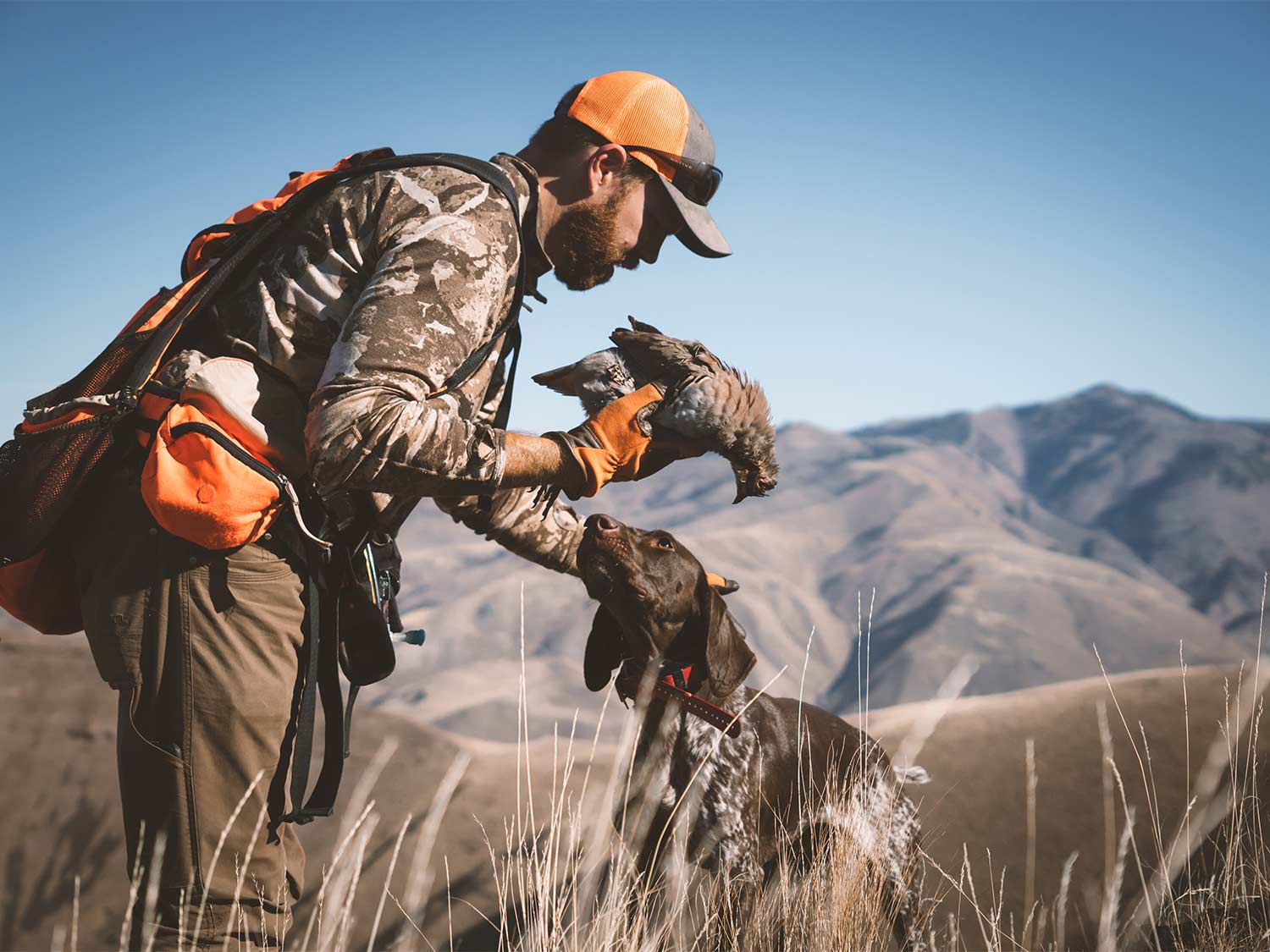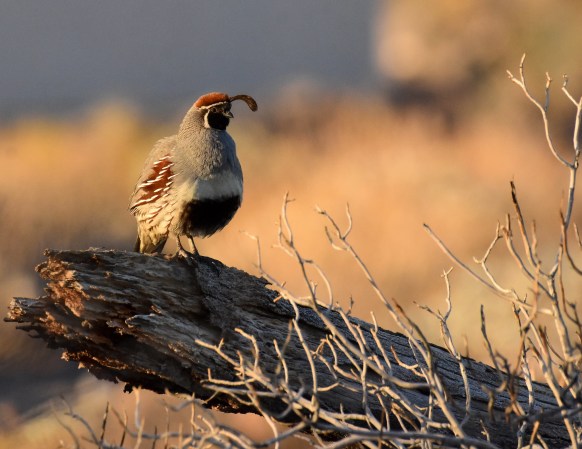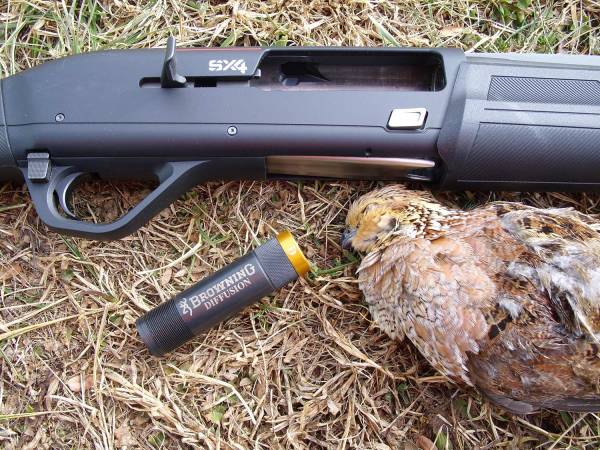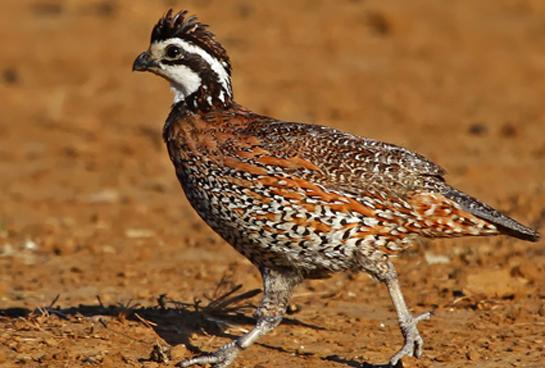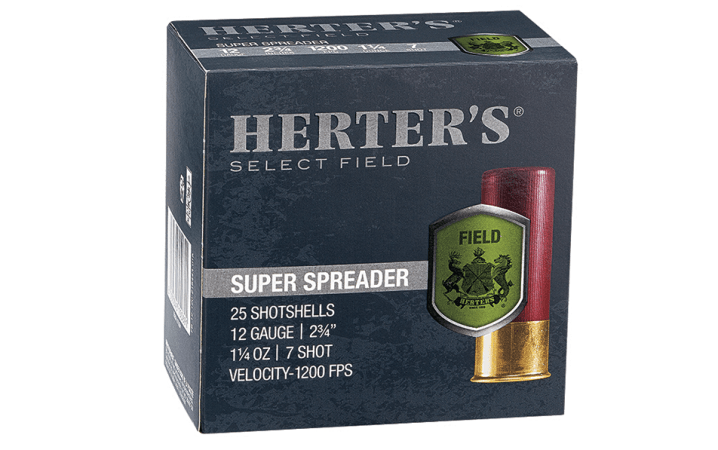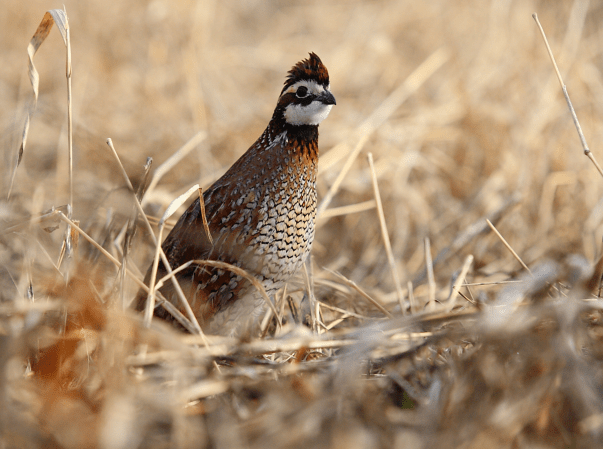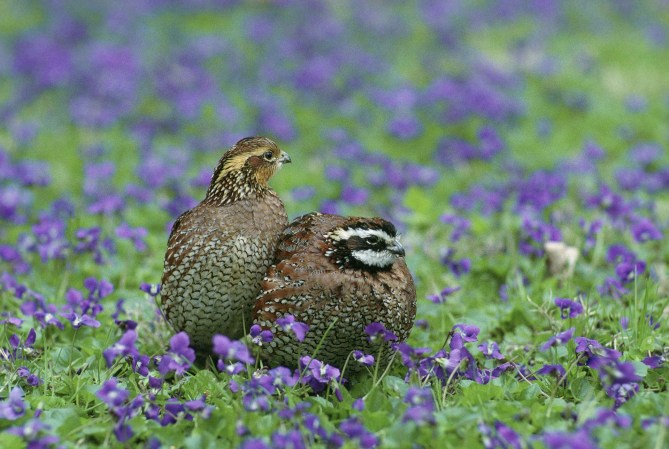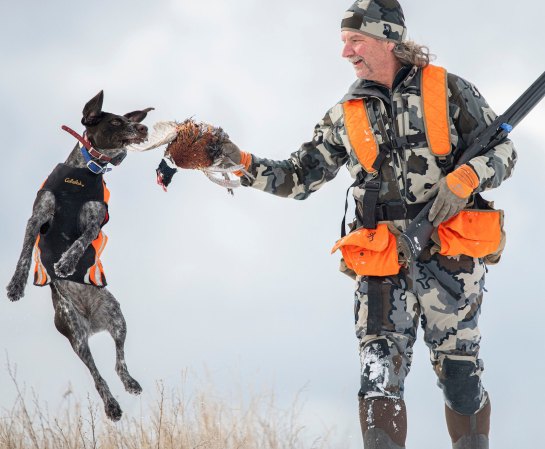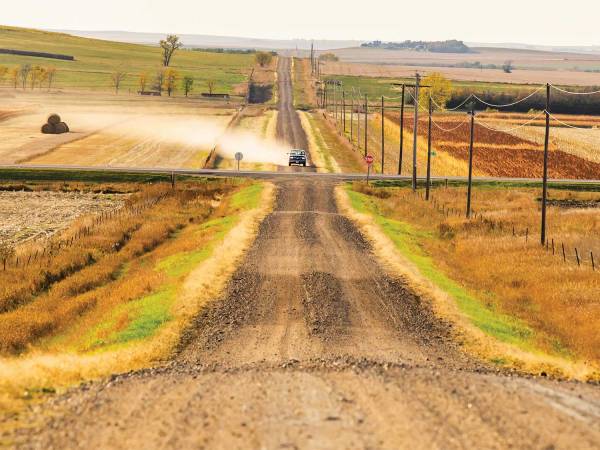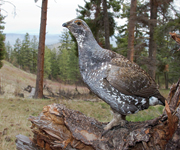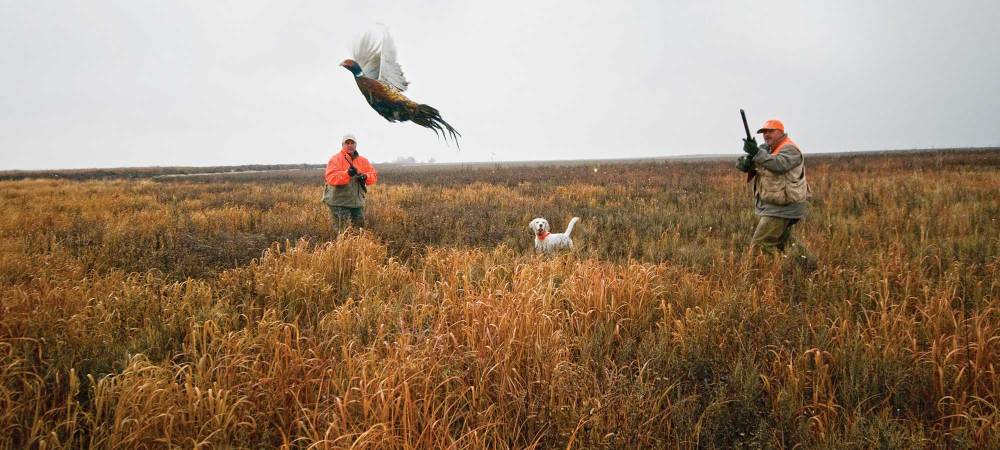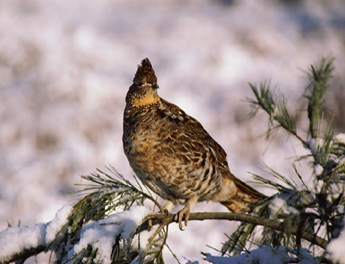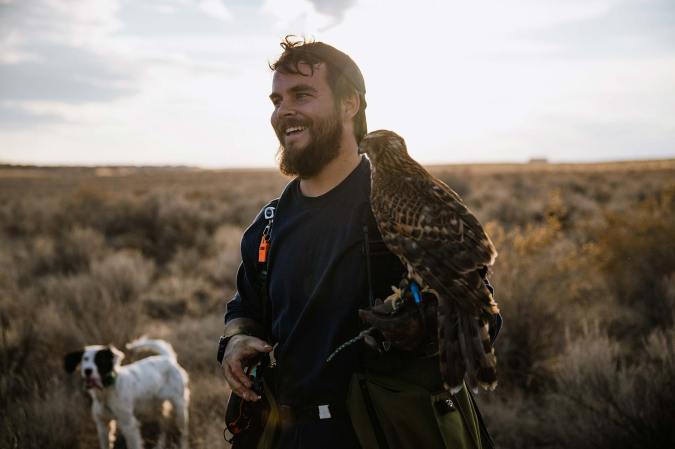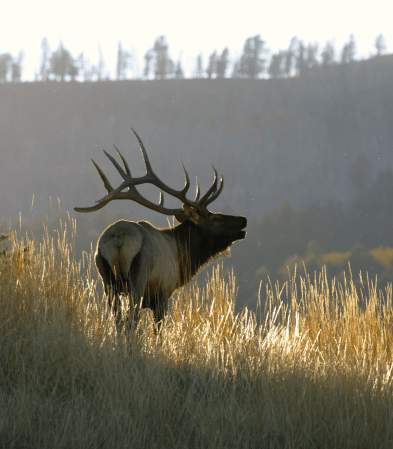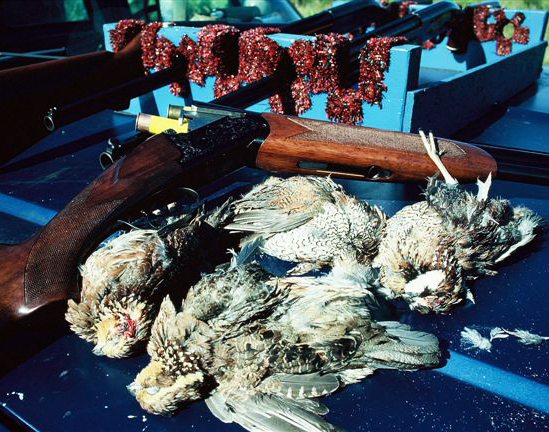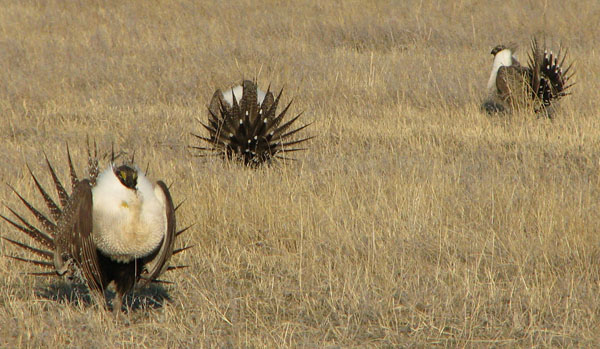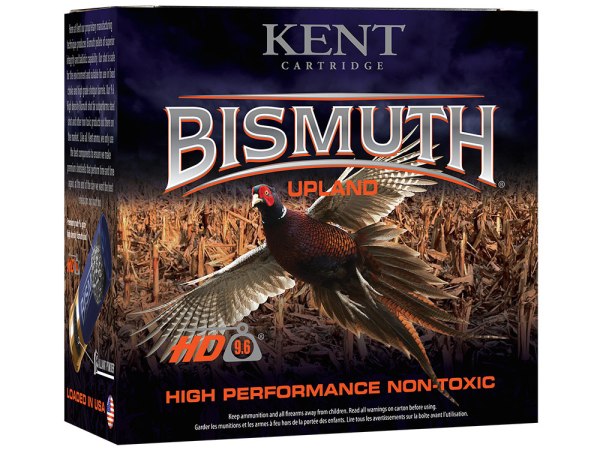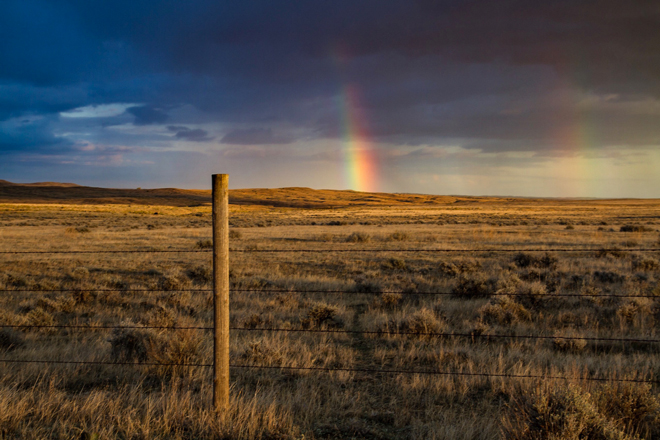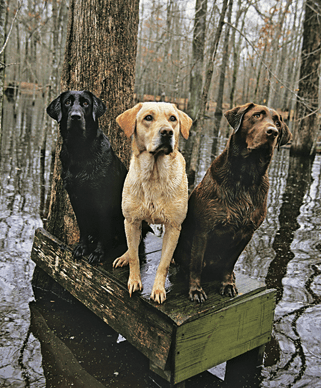I’ve traveled and hunted birds extensively across the West. It’s given me the opportunity to see some incredible places. But, the commitment that comes with an upland road trip is no small feat. Tons of planning and preparation go into it. You’ll need supplies if you’re going to camp, which I recommend because it’s easier when you’re traveling with dogs. It also gets you closer to the public land you’ll be hunting. Staying at a motel means you need to find one that’s dog-friendly, and you’ll also likely have a bit of a drive each morning. A road trip is also a huge time investment when it comes to scouting, particularly if you’re new to the area. So give yourself a few extra days to get acclimated to the locale you will be hunting.
And if you’re coming all this way to hunt out West, you should maximize the experience by targeting areas that will allow for a mixed bag. Most veteran upland hunters know the West is best when it comes to chasing a variety of upland birds, but with so many states and such vast landscapes of public land to explore, it can be a daunting endeavor. During my travels there have been a few states that have stood out for a DIY hunt. The combination of expansive public lands and wild birds in these five states are second to none. Here’s what you can expect and the areas to target.
1. Idaho
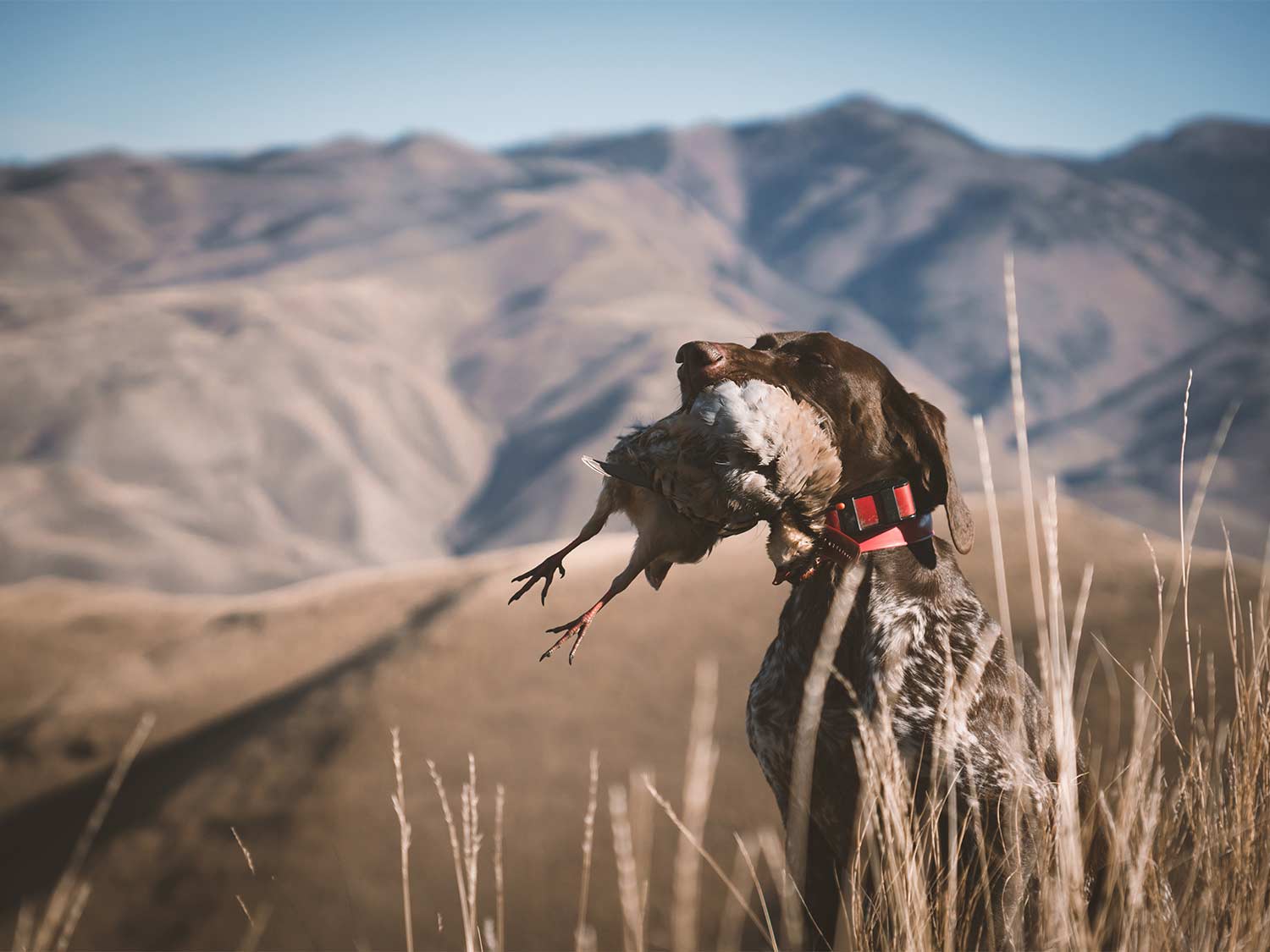
- Target Species: Ruffed grouse, dusky grouse, spruce grouse, California quail, chukar, Hungarian partridge, sage grouse, Columbian sharp-tailed grouse, pheasant
- Non-Resident License Cost: $97.75 (annual); $35.50 (3-day)
- Amount of the state that’s public: 70 percent
If you’re a diehard upland hunter, then you probably already know there’s more to the Gem State than potatoes. Hells Canyon is already on most wingshooters’ bucket list and is a favorite spot of mine for good reason, but there’s many other places to explore in Idaho than those steep chukar hills. Idaho holds nine huntable species of upland game and with most of the seasons overlapping, the opportunity for a road trip and a mixed bag is there for the taking.
The majority of Idaho’s topography and habitat makes it prime for hunting forest grouse. With dusky, spruce, and ruffed grouse on the menu, there’s a lot of opportunity and they can be found in every National Forest in Idaho. Spruce and dusky grouse can be located north of Boise, with the Payette, Sawtooth, and Nez Perce-Clearwater National Forests being good places to start. Dusky grouse will be at higher altitudes and actually seek refuge up high during the winter, so keep that in mind. Ruffed grouse are also widespread and generally found at lower altitudes close to water. A great resource for those looking for ruffed grouse information is a book written by local expert Andy Wayment.
Once you get your fill of forest grouse, look to the south and southeastern parts of the state where there are options for those in pursuit of prairie birds. Be aware that Idaho’s sage grouse season is short, lasting just two to seven days depending on the geography and populations. And the Columbian sharp-tailed grouse season is also short lived. It’s only open for the month of October, but it provides an exciting challenge for both novice and veteran upland hunters. There are several WMAs in the southeast corner of the state that offer good hunting opportunities. To avoid the crowds, consider avoiding Access Yes! properties and CRP acreage. They only have a two-bird limit, so you could potentially drive 15 hours and limit in the first 30 minutes (like I did once). More information on the Columbian sharptail can be found here.
The partridge and quail season opens early in Idaho (Sept. 19), which is exciting for hunters looking to kick off their season early. As much as I’d love to get my chukar season started early, I do find it a little too early. Even in October—when most other states open—it can be hot and dry, making scenting conditions tough and complicating things with the need to pack in more water. I personally use this time to pursue forest grouse. If you’re planning a trip to chase chukar in the southern part of Idaho, wait until late October/early November to decrease your (and your dog’s) chances of rattlesnake encounters, and have your trip overlap with the Columbian sharptail (October) or pheasant (November) seasons.
2. Nevada
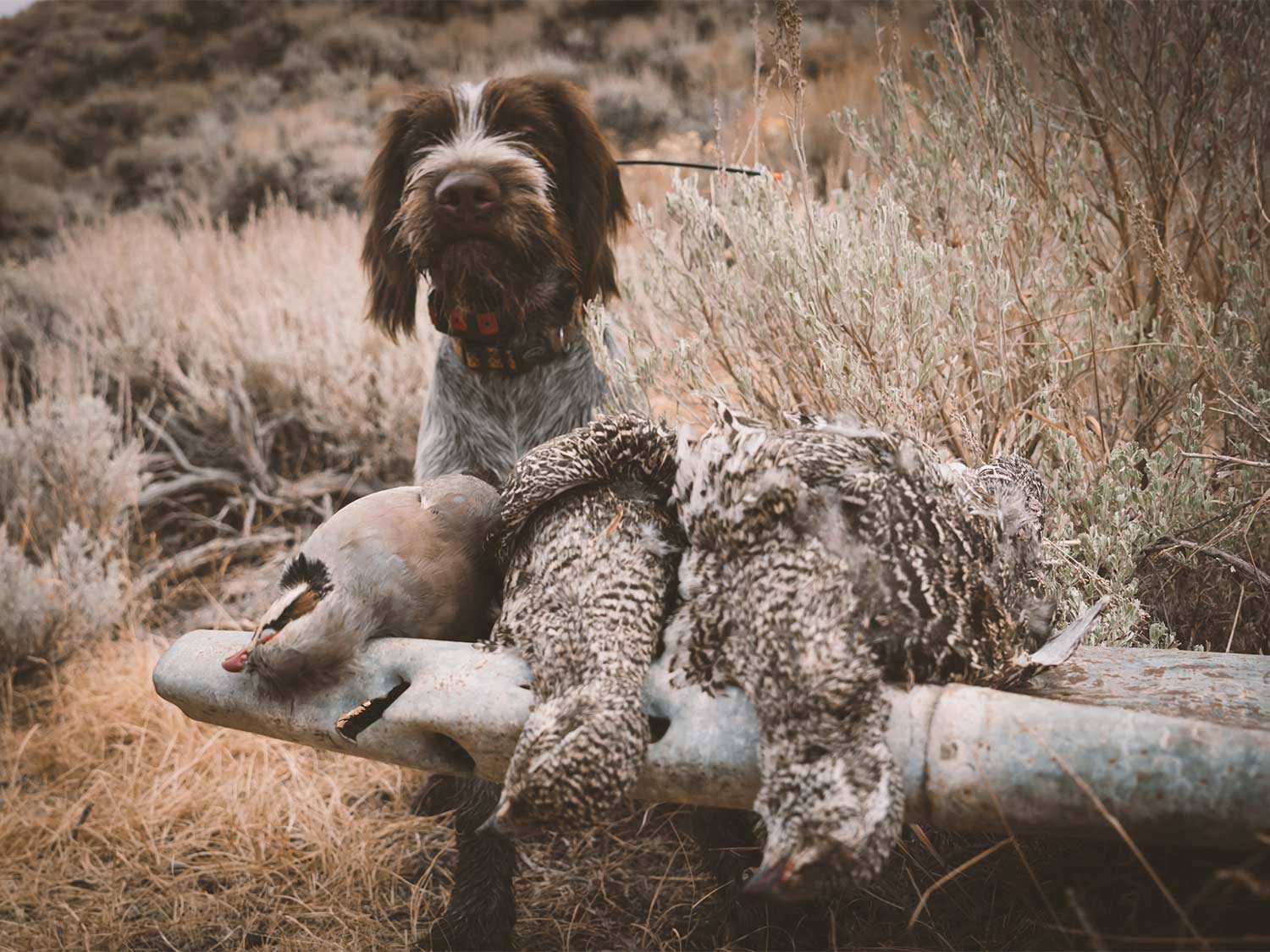
- Target species: Himalayan snowcock, dusky grouse, sooty grouse, ruffed grouse, chukar, Hungarian partridge, California quail, Gambel’s quail, mountain quail, pheasant, sage grouse
- Non-Resident License Cost: $156 (annual hunt/fish combo); $24 (1-day upland, waterfowl, and fishing combo)
- Amount of the state that’s public: 87 percent
My home state of Nevada has 11 species of upland birds to offer residents, and 10 to non-residents. The vast majority of them can be found in the northern part of the state. Like most Western states, the season kicks off Sept. 1, with forest grouse and the vaunted Himalayan snowcock. While Nevada isn’t known for forest grouse hunting, you are able to find both species of blue grouse (sooty in the west and dusky in the east), as well as small pockets of ruffed grouse throughout northern Nevada. That said, the real early-season challenge is the pursuit of snowcock, which is what kicks off my season every year.
The snowcock was introduced to Nevada in the 1960s and is the only place you can find this bird outside of its native range. Widely considered as the hardest of all upland birds to hunt, it is found at elevations of over 10,000 feet in the rugged terrain of the Ruby Mountains. They are the spookiest birds I’ve ever encountered, so don’t expect them to hold for a point. Leave the dogs at home for this one, and give yourself several days. You need to approach snowcock like a spot-and-stalk big game hunt.
The sage grouse season follows soon after, however it’s not currently open to non-residents. That said, be sure to check on the regulations as they are constantly changing and increasingly difficult to navigate. Like with most states, this bird is under increasing pressure through habitat loss, so don’t expect this season to be open long.
California quail are the most prevalent in Nevada, but there’s also Gambel’s quail down south and there are mountain quail close to the Sierras. All offer a unique style of hunting.
California quail are the most widespread in Nevada and we often call them urban quail as they are regularly found close to civilization, offering plentiful opportunities without having to travel far. The best place to begin your search is creek beds with dense cover, especially those with water year-round.
Mountain quail are easily my favorite quail to hunt, but they are elusive in Nevada and mostly found along the border of California and northern Nevada. They are a fast-flying and unpredictable bird, which makes them an absolute blast to hunt. I’ve found them in varied terrain and cover, but like their California quail cousins the search should start at water sources with dense cover and steep slopes. I’ve found them in a mix of sage brush, juniper, manzanita, and oaks. If Gambel’s are what you’re after, stick to the southernmost end of the state where you’ll only be able to get a mixed bag with chukar.
While there are three species of quail to chase in Nevada, it is the chukar that is considered the gold standard for adventurous upland hunters—and my absolute favorite bird to chase. Some hunters in southern Idaho may dispute this, but Nevada is home to the best wild chukar hunting in the world.
The traveling Chukar hunter should focus on the northern part of the state. There are so many mountain ranges to choose from so a good starting point is the Nevada Chukar Forecast, which is released by NDOW at the start of each season.
Another great resource for those who are new to chasing these birds is the Upchukar podcast, which covers tips, tactics, and the subculture behind chukar hunting. With so much public land in Nevada’s mountain ranges, there are plenty of chukar to chase. Best of all, you’ll rarely ever come across another hunter, making it an excellent option for those seeking solitude.
Generally, the farther you are from civilization, the better the hunting. Look for water sources early-season and switch your focus to southern-facing slopes once the snow hits. Man-made guzzlers are also a good starting point in the drier regions and they can be found on OnX Maps or the NDOW-sanctioned guzzler map. For those looking to make it a mixed bag, drop your elevation to the creek beds for California quail or head to the northeast corner of Nevada for a chance at a Hungarian partridge.
Read Next: How to Hunt the Mysterious Woodcock Migration
3. California
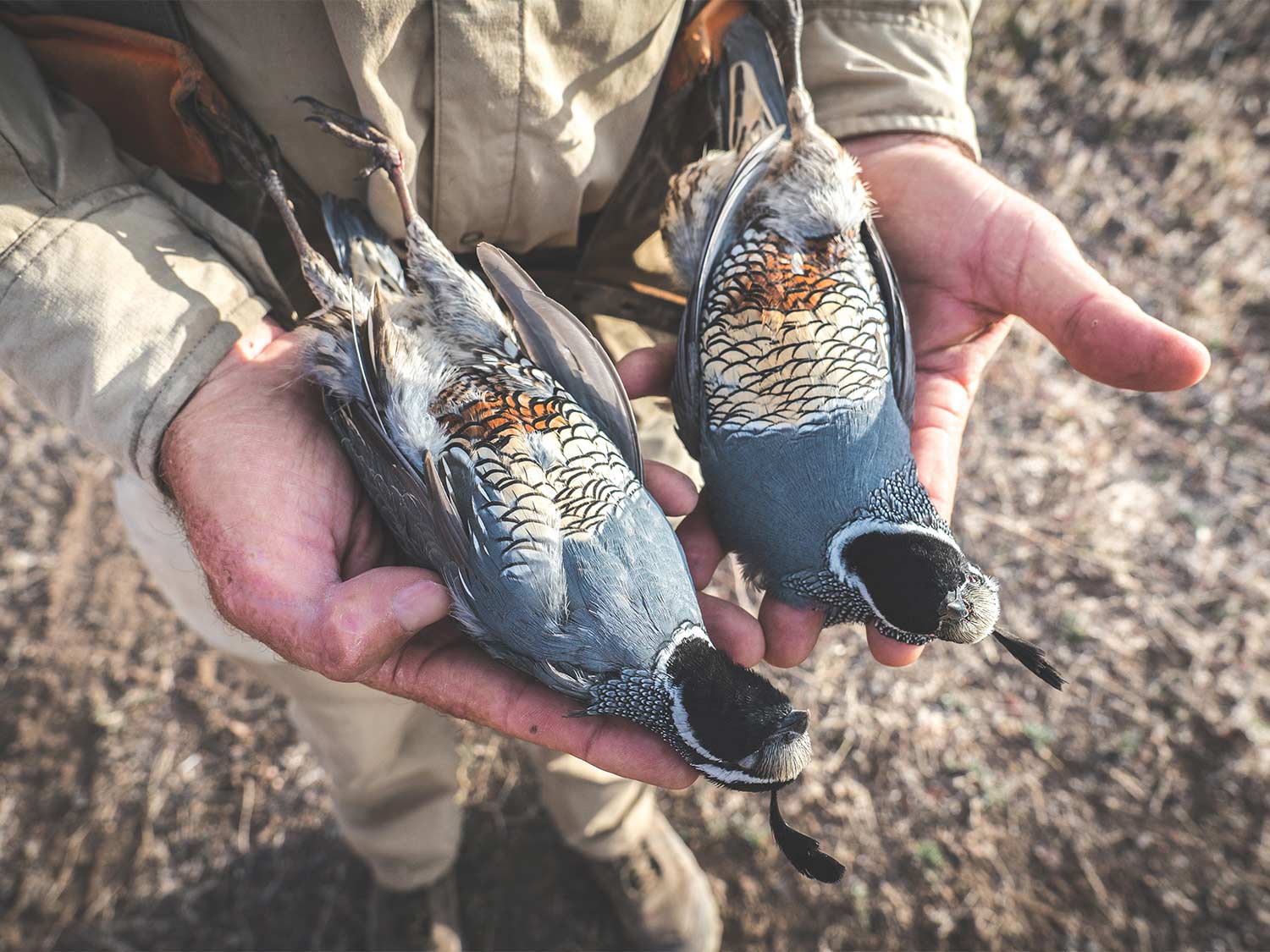
- Target Species: Sooty grouse, ruffed grouse, California quail, Gambel’s quail, mountain quail, chukar, pheasant, white-tailed ptarmigan
- Non-Resident License Cost: $178.20 (annual); $51.02 (2-day)
- Amount of the state that’s public: 52 percent
California isn’t the first state that comes to mind for bird hunters, however, with seven huntable species and a wide variety of landscapes to explore, it’s an upland destination with a lot more to offer than you think. From chasing Gambel’s near Joshua Tree National Park to mountain quail on the outskirts of Yosemite, there are plenty of places to find birds.
If you’ve never spent much time driving through California, it’s hard to appreciate its immense size and diversity. Forest grouse opens Sept. 14, and populations increase the further north you travel. Unfortunately, California has closed its sage grouse season for the foreseeable future due to a steep decline in bird numbers. But California has added an introduced species: the white-tailed ptarmigan.
The small grouse species was introduced to the Sierra Nevada range in California during the 1960s and is known for being hard to find, but there is a huntable population. Residing at 10,000 to 14,000 feet, chasing the white-tailed ptarmigan in California is not for the faint of heart. But it’s definitely a unique upland opportunity and an adventure you won’t forget. The season is short (Sept. 14 to 22) and only overlaps with forest grouse and mountain quail, but it does present the unique opportunity for incredible backcountry fly-fishing for California’s state fish, the golden trout.
Southern California is full of sun-kissed beaches (and smog), but when fall hits, the chance to chase the quail trifecta (California, Gambel’s, and mountain) is not too far from the Sunset Strip. Check onX to find public land just outside the city. While California quail are by far the most prevalent species, mountain quail can also be found in most nearby ranges, including Los Padres National Forest, Angeles National Forest‚ and San Bernardino National Forest. If it’s Gambel’s you’re after, the public land around Joshua Tree is a good place to start. If time is on your side, the Mojave National Preserve is also a great place to look, but a farther drive from Los Angeles.
Like in many states, pheasant hunting in California has declined sharply due to habitat loss and changes in agriculture practices, but there are some great public-land opportunities if you’re willing to put in the time to find them. There are no pheasant populations near the hustle and bustle of the city, so a drive north is required to get into decent populations of ringnecks. The best places to look for these birds are in the wetlands, Wildlife Refuges, and Wildlife Management Areas. There are several places listed specifically on California Fish and Game’s website that also include harvest statistics. Do your homework before you go.
The superb hunting in California doesn’t come without a few complications however. Non-toxic ammunition is required for all upland hunting (I use Kent Bismuth 6s for all my pursuits in California). The requirements to purchase ammunition within California are also tricky and include obtaining a Certificate of Eligibility. These regulations are complicated and you should be very clear on them before you travel.
4. Oregon
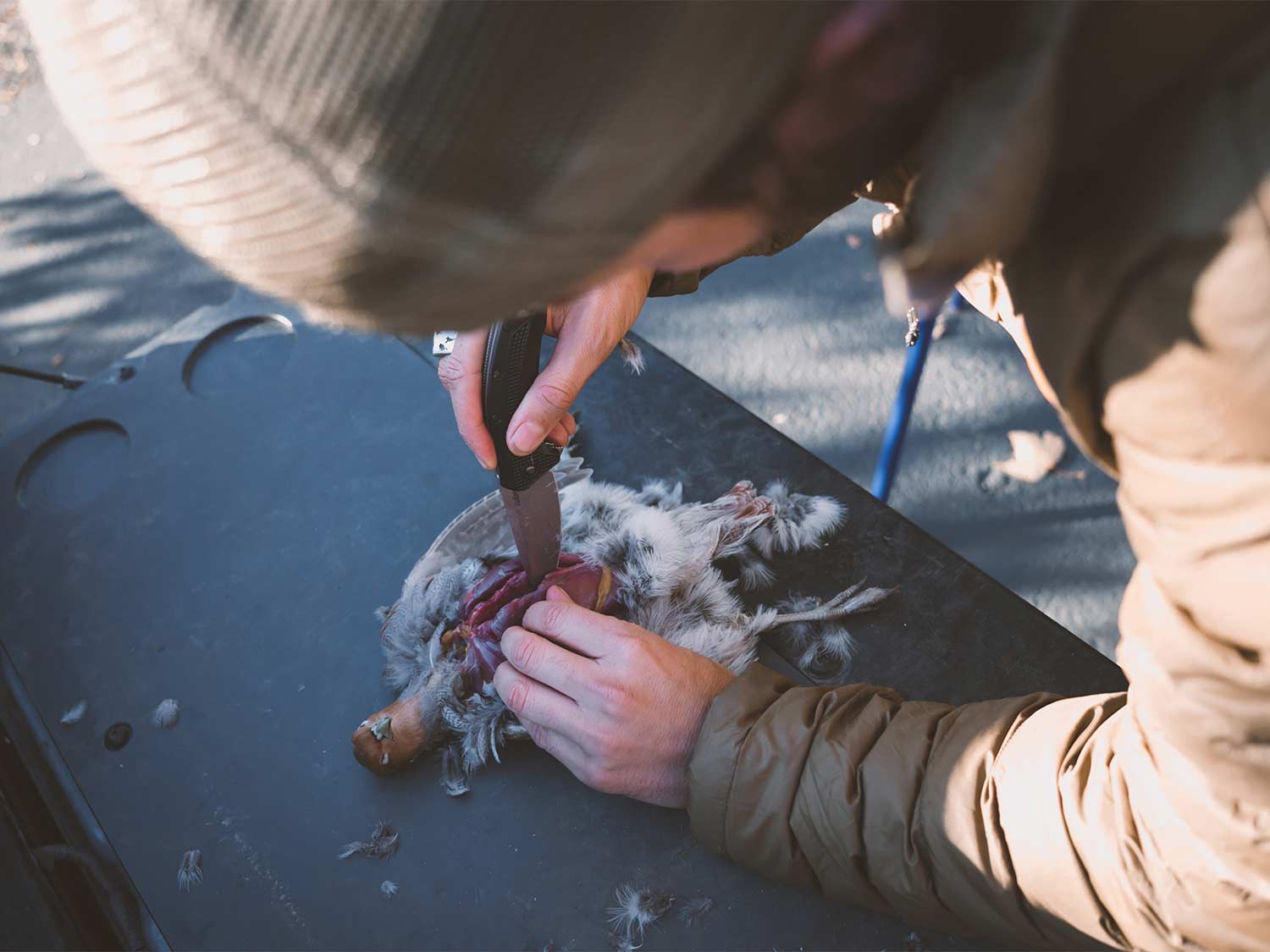
- Target Species: Chukar, Hungarian partridge, California quail, mountain quail, pheasant, sage grouse, ruffed grouse, sooty grouse, dusky grouse
- Non-Resident License Cost: $172 (annual); $32.50 (3-day); Plus $44.50 for a game bird validation, and $2 for sage grouse permit (if needed)
- Amount of the state that’s public: 53 percent
Pheasants were once abundant in Oregon, which is a little-known fact about the Beaver State. But unfortunately the change in agriculture (a boom in the vine, hops, and orchard industries) has resulted in huge habitat loss across the state. The original introduction was in the Willamette Valley (now the wine capital of Oregon), and you’d be hard-pressed to find wild birds there today. Focus on pheasants in the Columbia Basin east of the Cascades or down south in the Klamath Basin. River bottoms offering dense cover, wetlands, and the public lands on the periphery of agriculture fields are good places to look for elusive Oregon roosters.
During my time living in Oregon, I was fortunate enough to enjoy a mixed bag of pheasant, chukar, Hungarian partridge, and California quail—along with a few opportunistic mallards and a pintail. (Just make sure you have a state waterfowl license before you shoot a duck.) Those opportunities still do exist.
To have such a day, you will need to be on the eastern side of the state in the high desert where the chukar and Hungarian partridge call home. You also should not forget that half of Hells Canyon also falls within the borders of Oregon. With half of the state belonging to the public and the majority of that in the east, there’s plenty of room to explore. Oregon doesn’t require non-toxic ammunition for upland birds, but much of the best hunting in Eastern Oregon is close to larger bodies of water, so if you’re looking to bag a duck or two, pack non-toxics.
There aren’t many people who can say they’ve hunted grouse at the base of an active volcano, but you can do that in the Oregon Cascades. The USGS has listed four Oregon volcanos as the next to erupt (Mount Hood, Newberry Volcano, The Three Sisters, and Crater Lake)…and there’s grouse around all of them. So if you enjoy spectacular views, chasing forest grouse, and are a bit of a pyromaniac, these volcanos are great places to start looking.
Venture south toward Crater Lake and beyond, and you will arrive in some prime mountain quail country. The mountain quail hunting here is among the best in the world (along with parts of the Sierra Nevada), and the National Forests around Medford will offer the best opportunities for not only mountain quail but sooty grouse and California quail as well. Mountain quail can also be found around the Klamath Basin which offers good pheasant and waterfowl (when there is water) opportunities.
Sage grouse hunting in Oregon is a controlled hunt and has to be applied for well in advance of the season opener. More information on dates and available units can be found here.
5. Utah
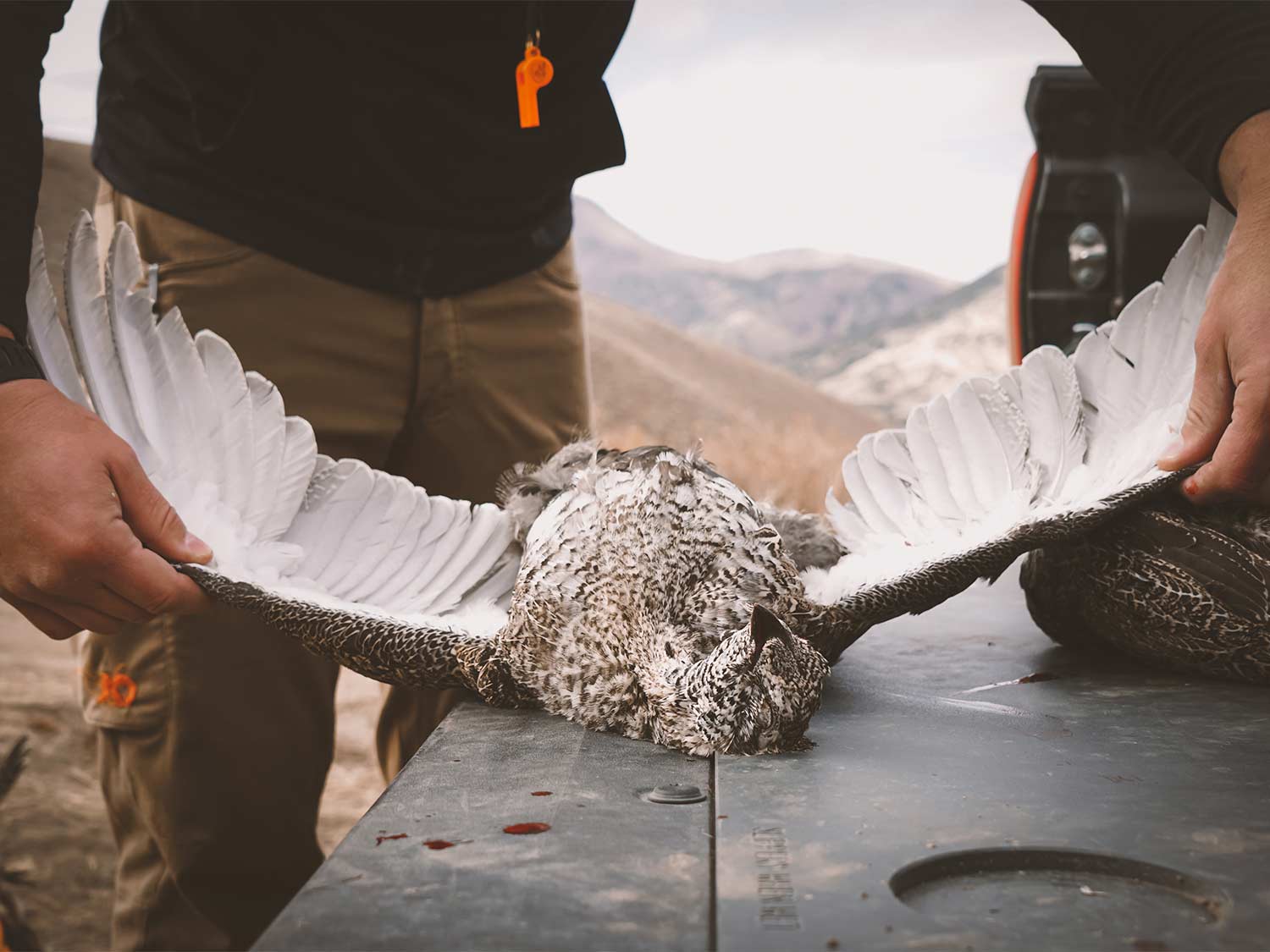
- Upland Species: Dusky grouse, ruffed grouse, sage grouse, sharp-tailed grouse, white-tailed ptarmigan, chukar, Hungarian partridge, pheasant, California quail, Gambel’s quail
- Non-Resident License Cost: $72 (annual); $42 (3-day)
- Amount of the state that’s public: 75 percent
Utah has some of the most diverse landscapes I have ever seen, from the red rocks in the south to the incredible High Uinta Wilderness. The diversity in landscapes also offers a diversity of upland bird species.
The white-tailed ptarmigan calls the Uinta mountains home. It’s an incredible mountain range lying east of Salt Lake City with peaks reaching over 13,000 feet. My trip to the Uintas last season was easily one of my hardest bird hunting experiences, a 10-plus mile hike that culminated when I shot my first ptarmigan at just under 13,000 feet. It’s the adventure that comes with it that makes it such an incredible trip, and fishing the high lakes for tiger trout was amazing. The season opens Sept. 1, and coincides with ruffed and dusky grouse, which also call the Uintas home.
If chukar and Hungarian partridge are on your list, you’ll have to head to the northwest part of the state for an opportunity to bag both on the same hunt. While the chukar’s range is fairly widespread in Utah, Huns are concentrated along Route 30 between I-80 and I-84. Utah has fairly decent pheasant hunting compared to some other states on this list and their populations can be found anywhere from Logan to Provo. There are good opportunities to be found in the Westlands and agriculture land in this portion of the state, however public land access can be tricky to find in these areas.
If it’s quail you’re looking for, Utah has two species: California and Gambel’s. The California quail’s range is almost identical to that of the pheasant but can also be found in drier areas where ringnecks are not present. Gambel’s quail are almost entirely in limited to Washington County.
Sage grouse and sharp-tailed grouse are both by permit only, and need to be applied for well in advance and are in limited quantities.
